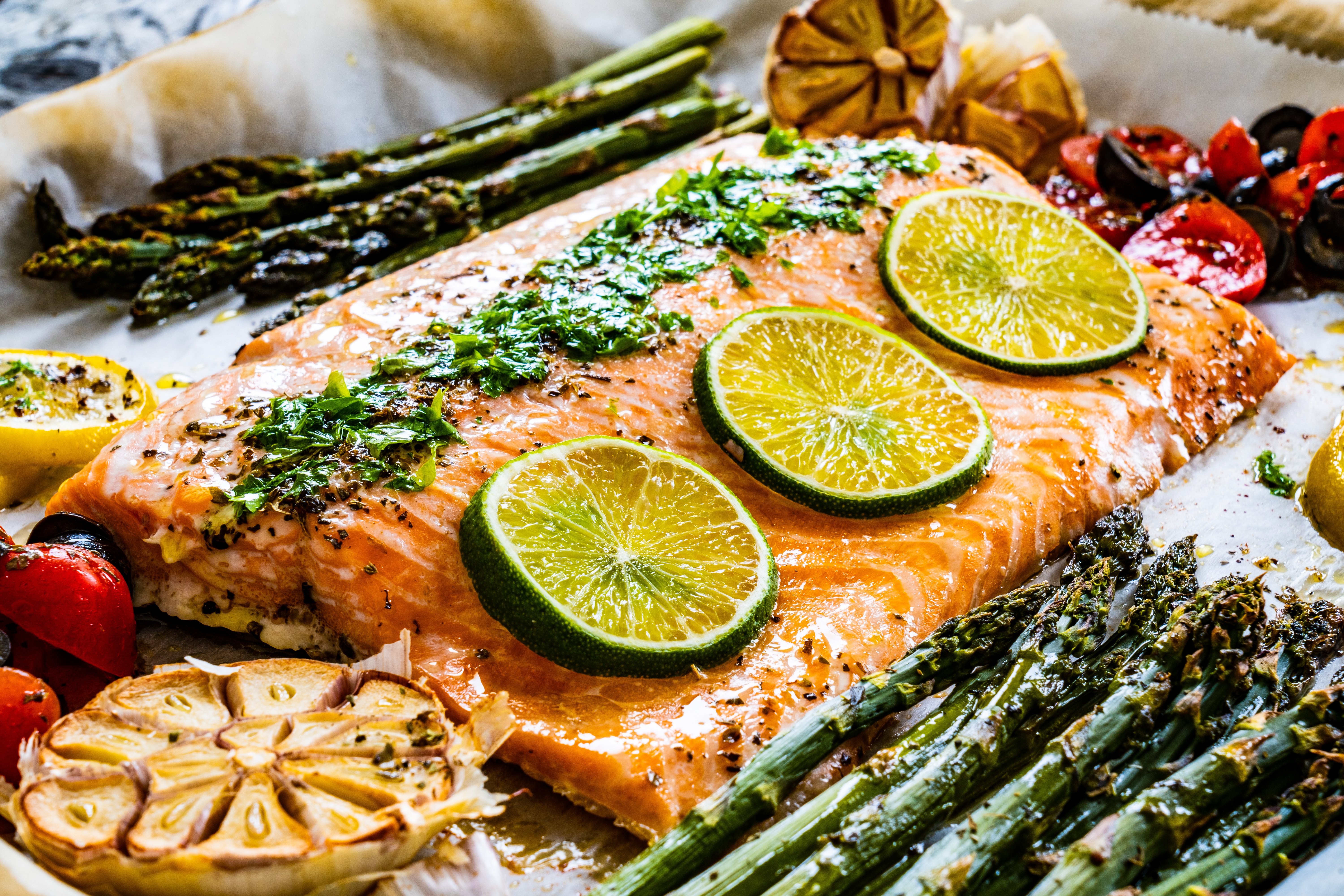Breaking Down Sheet Pan Dinners + Recipe
Between planning the meal, shopping for the secondary ingredients, cooking all the components, and clean up; meal time can be stressful. Add in working late at the office, pickups after practice, and being tired from an already long day- it can be mighty tempting to opt for takeout for the third time this week. Fear not- we have an easy solution to fix your dinner dilemma.
Enter our hero, sheet pan dinners! Sheet pan dinners are a simple, easy, straightforward hack that's loved by all those who have busy schedules but would like to eat healthier.
A sheet pan dinner is exactly what it sounds like, a dinner made on a sheet pan. This meal only requires you to chop up a few key ingredients, season the pan, and bake it all together in the oven. There's no worrying about watching multiple pans or doing a bunch of dishes after dinner and meal prep.
How To Make A Sheet Pan Dinner
At this point, you might be thinking to yourself, "I want to make a sheet pan dinner tonight but where do I start?" Let us break it down for you. Sheet pan meals are made up of three main components: protein, a veggie (or a couple), and seasoning.
- Start with a protein:
Start by choosing a protein to center your sheet pan meal around. Opt for lean meats like chicken, salmon, white fish, or turkey. If you don’t consume meat you can always use alternative meat products or skip the meat altogether and just stick to veggies.
- Pair in vegetables:
Vegetables can be the trickiest part of the sheet pan meal as you work to put a flavor profile or theme together. Additionally, some veggies roast quicker than others which can add complexity to making your meal. The best plan of attack is to pair vegetables together that have similar cooking times. It’s even better if they cook at the same rate as the meat, but if not you can plan accordingly. If you choose veggies with different cook times, simply put the vegetables with the longest cook times in first, and add another pan with a shorter cook time about halfway through. That way you won’t overcook anything and everything will come out hot and ready at the same time.
Common Veggie Cook Times Cheat Sheet:
NOTE: All of the times below are estimated for roasting in the oven at 425 degrees Fahrenheit.
15 to 20 minutes:
- Asparagus
- Green beans
- Onions (sliced or chopped)
- Peppers
- Summer squash (cubed)
20 to 30 minutes:
- Broccoli
- Cauliflower
- Corn on the cob
- Eggplants
- Mushrooms
- Winter squash (cubed)
- Zucchini
30 to 45 minutes:
- Beets
- Cabbage
- Carrots (halved or cubed)
- Potatoes (cubed)
- Sweet potatoes (cubed)
- The Secrets Is The Seasoning:
Salt isn’t merely a seasoning, it’s a staple in any dish so don’t skip the salt but it's not the only seasoning out there. Add garlic and parmesan cheese to your potatoes or carrots for an Italian feel. Try adding ranch seasoning to spice up your chicken. Lemon and capers could easily be added to salmon for a fresh, light flavor. You can also experiment with different oils or herbs to add new flavors to classic favorites. Think outside the box and don’t be afraid to experiment and try something new.
We Have A Little Something For You!
Ready to give pan sheet meals a try but maybe need a bit of inspiration? Let us give you your first sheet pan recipe to try!
Fresh Lemon Garlic-y Chicken Sheet Meal:
- 1 lb mini fingerling potatoes, chopped into bite-size chunks
- 1 lb asparagus, trimmed and chopped in half
- 1 ½ lb boneless skinless chicken breast, chopped into chunks
- 4 Tablespoon extra-virgin olive oil
- juice of 1 lemon
- 4 cloves garlic, minced
- 1 Tablespoon maple syrup
- 1 ½ teaspoon sea salt
- 1 ½ teaspoon ground pepper
- 1 teaspoon dried basil
- 1 teaspoon dried oregano
How To Make It:
- Make the dressing by combining 3 tablespoons of olive oil, lemon juice, garlic, maple syrup, sea salt, ground pepper, basil, and oregano in a small bowl and whisking until combined.
- Preheat oven to 400°F and grease sheet pan with leftover 1 tablespoon of olive oil. Coat chicken and potatoes with lemon garlic mixture. Place potatoes on the sheet pan and roast for 20 mins. Meanwhile, let the chicken marinate in the sauce mix.
- Once potatoes have roasted for 20 minutes, add chicken with sauce along with asparagus to the pan. Place pan back in the oven and roast for 15-25 minutes or until chicken is cooked through. Enjoy!
CON-1549-001 02/23

